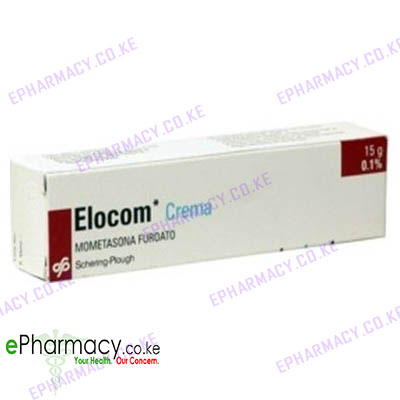
Your Tempeh black spots images are available in this site. Tempeh black spots are a topic that is being searched for and liked by netizens now. You can Find and Download the Tempeh black spots files here. Download all free images.
If you’re searching for tempeh black spots pictures information connected with to the tempeh black spots topic, you have pay a visit to the ideal blog. Our site frequently provides you with hints for downloading the highest quality video and picture content, please kindly hunt and find more informative video content and images that match your interests.
Tempeh Black Spots. What are the Black Spots on Tempeh. Thank you so much in advance. No black spots on my tempeh. Some black spotting is good and can increase flavor.
 Butter Tempeh With Black Rice Food Tempeh Recipes From pinterest.com
Butter Tempeh With Black Rice Food Tempeh Recipes From pinterest.com
As the tempeh matures in the incubator it begins its reproduction process and starts to sporulate. Thank you so much in advance. How can I tell if my Tempeh has Gone Bad. The black spots on tempeh are perfectly normal and it is safe to eat. It is not a spoilage and it doesnt mean your tempeh has failed. These are an entirely natural part of the tempeh.
During incubation sometimes black spots will show up around the holes of the bag.
The biggest indicator that tempeh is. How can I tell if my tempeh has gone bad. When the fermentation process is complete the culture we use to make tempeh goes from white to black. It is not a spoilage and it doesnt mean your tempeh has failed. The black spots are spores similar to what is found on the underside of a mushroom. Think about the underside of a mushroom.
 Source: pinterest.com
Source: pinterest.com
These spots do not necessarily indicate spoilage but are part of the tempeh cultures life cycle. Thank you so much in advance. In Indonesia where tempeh originated some recipes call for overripe or very dark tempeh. I bet its okay to try it even if the mold isnt black and it might. No black spots on my tempeh.
 Source: pinterest.com
Source: pinterest.com
The answer is yes you can. Greyblack spots are completely normal and safe to eat. You might also notice the mycelium turning a greyish color. The black spots or some of you referred as mould are the black spores. The black or gray patches are completely harmless and actually indicate that the tempeh has matured to its peak of flavor.
 Source: ar.pinterest.com
Source: ar.pinterest.com
The black or gray patches are completely harmless and actually indicate that the tempeh has matured to its peak of flavor. The tempeh should be firm and hold together when sliced. During fermentation the good mold is allowed to grow and reproduce. Some black spotting is good and can increase flavor. Tempeh is ready when entire contents are white indicating that the mycelium has enveloped the ricebean mixture and some dark greyblack spots start to form near air holes.
 Source: pinterest.com
Source: pinterest.com
It is not a spoilage and it doesnt mean your tempeh has failed. Thank you so much in advance. Some black spotting is good and can increase flavor. Its these spores that appear as small dark spots on the surface of your tempeh. These are an entirely natural part of the tempeh.
 Source: pinterest.com
Source: pinterest.com
Why does tempeh form black spots on it. I bet its okay to try it even if the mold isnt black and it might. It is not a spoilage and it doesnt mean your tempeh has failed. How can I tell if my Tempeh has Gone Bad. Black or grey spots are areas where Rhizophus has formed spores - a sign of the beginning of overripe tempeh.
 Source: pinterest.com
Source: pinterest.com
Placed the tempeh in the center rack of oven on top of bamboo sheet - heat with oven light at top and lamp at bottom that turns off at 29 degrees and back on at 27 C Tempeh keeps coming with black spots. The biggest indicator that tempeh is. The tempeh is ready when the entire surface is covered with dense white mycelium some black or gray spots are fine as well as the spaces between the beans. The black or gray patches are completely harmless and actually indicate that the tempeh has matured to its peak of flavor. These are actually the spores of the tempeh culture and are not harmful to eat though they often lead to the consumer discarding the product as inferior.
 Source: pinterest.com
Source: pinterest.com
This is completely normal and does not indicate spoilage. How can I tell if my Tempeh has Gone Bad. The black or gray patches are completely harmless and actually indicate that the tempeh has matured to its peak of flavor. All this means is that the culture has entered into its sporulation phase. Some black spotting is good and can increase flavor.
 Source: ar.pinterest.com
Source: ar.pinterest.com
Or blue mould in blue cheese. Once the tempeh is ready remove the bags from the dehydrator incubator or oven and let the tempeh. These are an entirely natural part of the tempeh. What are the Black Spots on Tempeh. How can I tell if my tempeh has gone bad.
 Source: nl.pinterest.com
Source: nl.pinterest.com
No black spots on my tempeh. If the mycelium has not fully developed let it go another 12 hours then check again. My guess is that the temperature is probably a bit cooler than it needs to be. This time the temperature was quite stable. Again a few black spots on your tempeh especially where exposed to air is not an indication that it has gone bad.
 Source: pinterest.com
Source: pinterest.com
Small black spots may occasionally appear. These are actually the spores of the tempeh culture and are not harmful to eat though they often lead to the consumer discarding the product as inferior. The answer is yes you can. During incubation sometimes black spots will show up around the holes of the bag. These are an entirely natural part of the tempeh.
 Source: ar.pinterest.com
Source: ar.pinterest.com
Premature Sporulation of Tempeh. No black spots on my tempeh. The tempeh is ready when the entire surface is covered with dense white mycelium some black or gray spots are fine as well as the spaces between the beans. We get asked this question a lot while most of the products we send out has the pale brown colour that you are probably used to sometimes grey patches and black spots can sometimes form. During fermentation the good mold is allowed to grow and reproduce.
 Source: pinterest.com
Source: pinterest.com
Some black spotting is good and can increase flavor. The texture should not be slimy and the aroma should be mushroom-like or yeast-like. These spores can mean two things 1 the fermentation process is complete OR 2 during fermentation process there was some excess oxygen resulting in the Oligosporus spores maturing slightly earlier than usual. It is not a spoilage and it doesnt mean your tempeh has failed. As the tempeh matures in the incubator it begins its reproduction process and starts to sporulate.
 Source: pinterest.com
Source: pinterest.com
These are actually the spores of the tempeh culture and are not harmful to eat though they often lead to the consumer discarding the product as inferior. Think about the underside of a mushroom. Good tempeh should be firm with a thick white mycelium and have a mushroom-like aroma. These spores can mean two things 1 the fermentation process is complete OR 2 during fermentation process there was some excess oxygen resulting in the Oligosporus spores maturing slightly earlier than usual. Spores Spots.
 Source: pinterest.com
Source: pinterest.com
That seems to be the biggest factor in how long it takes for the tempeh to mature. A every slight smell of ammonia is normal. My tempeh has black spots on it. During fermentation the good mold is allowed to grow and reproduce. My guess is that the temperature is probably a bit cooler than it needs to be.
 Source: pinterest.com
Source: pinterest.com
Why does tempeh form black spots on it. The black spots on tempeh are perfectly normal and it is safe to eat. During fermentation the good mold is allowed to grow and reproduce. The texture should not be slimy and the aroma should be mushroom-like or yeast-like. Yes tempeh that appears black spots is normal but if accompanied by the smell of ammonia the tempe cannot be eaten.
 Source: pinterest.com
Source: pinterest.com
This is actually the fruiting stage of the tempeh and in no way indicates the product has gone bad or been contaminated. As the tempeh matures in the incubator it begins its reproduction process and starts to sporulate. What are the Black Spots on Tempeh. No black spots on my tempeh. The black spots on tempeh are perfectly normal and it is safe to eat.
 Source: pinterest.com
Source: pinterest.com
Premature Sporulation of Tempeh. These are actually the spores of the tempeh culture and are not harmful to eat though they often lead to the consumer discarding the product as inferior. These spores can mean two things 1 the fermentation process is complete OR 2 during fermentation process there was some excess oxygen resulting in the Oligosporus spores maturing slightly earlier than usual. Spore spots are safe for consumption. No black spots on my tempeh.
 Source: pinterest.com
Source: pinterest.com
Thank you so much in advance. My guess is that the temperature is probably a bit cooler than it needs to be. When the fermentation process is complete the culture we use to make tempeh goes from white to black. As the tempeh matures in the incubator it begins its reproduction process and starts to sporulate. In Indonesia where tempeh originated some recipes call for overripe or very dark tempeh.
This site is an open community for users to do sharing their favorite wallpapers on the internet, all images or pictures in this website are for personal wallpaper use only, it is stricly prohibited to use this wallpaper for commercial purposes, if you are the author and find this image is shared without your permission, please kindly raise a DMCA report to Us.
If you find this site beneficial, please support us by sharing this posts to your own social media accounts like Facebook, Instagram and so on or you can also bookmark this blog page with the title tempeh black spots by using Ctrl + D for devices a laptop with a Windows operating system or Command + D for laptops with an Apple operating system. If you use a smartphone, you can also use the drawer menu of the browser you are using. Whether it’s a Windows, Mac, iOS or Android operating system, you will still be able to bookmark this website.








